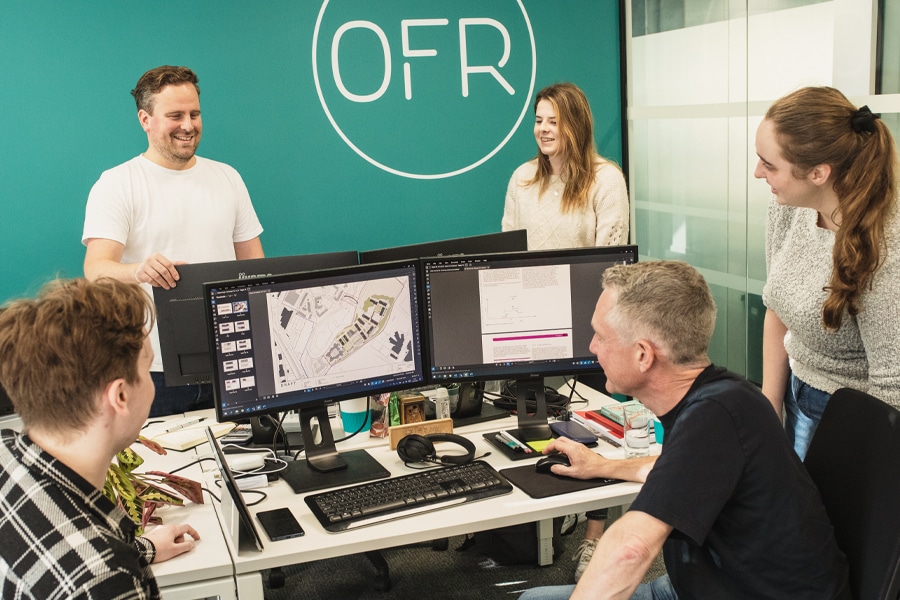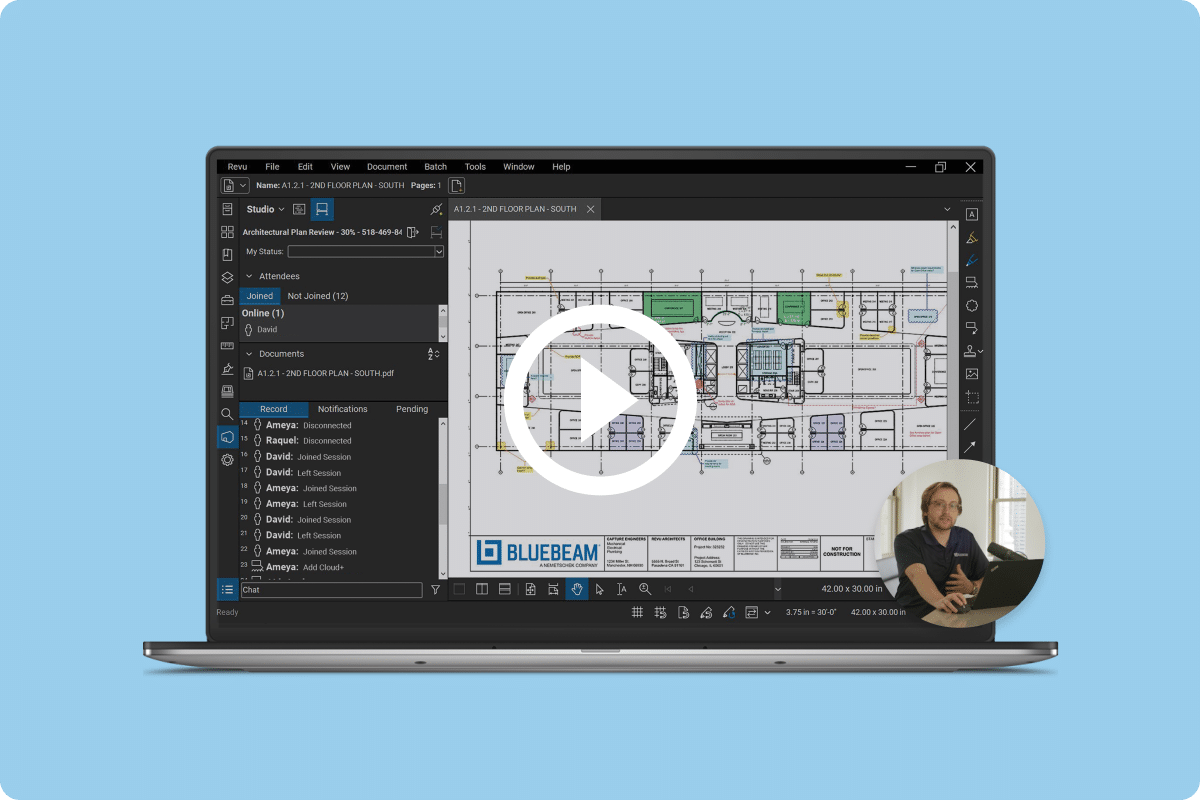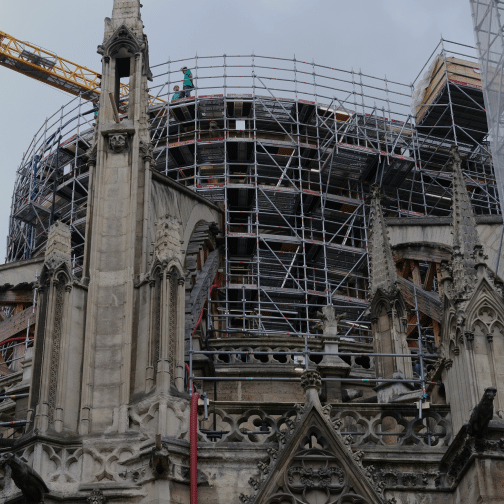A solution for the fire safety industry
Fire safety is a key consideration for every building, and information about the design process, specification of materials and installation and ongoing maintenance of products must be shared across multiple stakeholders.
With proposals in place for a British Standard Code of Practice for the digital management of fire safety information, and an industry seeking to improve its information in the wake of the Grenfell Tower fire, tools that can help manage this information are highly valuable.
Simon Lay, one of the founding directors at OFR, said that Bluebeam Revu has magically enhanced the way the firm is able to manage the difficult challenges it faces in the competitive and heavily regulated fire safety industry. Revu, in particular, has proven perfect for dealing with OFR’s large stakeholder chain and breadth of data. “Building control, local authorities, the fire service and other stakeholders such as planning departments and insurers all need access to our work,” Lay said.
“A lot of the design work we do is very complex, using state-of-the-art tools that we can’t necessarily expect the approvers to be as up to date with,” Lay said, emphasizing the firm’s challenges. “Revu helps us to communicate that we have considered a wide range of scenarios, a wide range of consequences and demonstrated that the building will be safe under those conditions.”
Tracks changes for accountability
The role of a fire engineer is to ensure compliance with legislation and ultimately protect people and property from the devastating effects of fire. There are several points at which an engineer can be brought in to assess the safety of a building. And, while OFR conducts fire assessments on occupied buildings, the team adds the most value if it is brought in before construction has even started, helping the architect during the initial design phase.
OFR’s role is to analyse the plans to work out if a building will be compliant. A fire statement will be created, setting out the measures that will be put in place in the building. This can be a difficult time in the process because the engineer is often working with limited information and only indicative room layouts. Moreover, the plans will develop and change throughout the design period; therefore, the ability to track changes and know who made them is critical.
Tom Bentley, an associate director at OFR, joined the company with 15 years’ experience in fire protection and mechanical building services in several leading consultancies. He has used Revu for around 10 years and champions the software, arguing that it should be the “go to” tool for any fire safety consultancy.
Tom said that Revu’s simplicity is one of its primary advantages, especially when a firm like OFR needed to train its rapidly growing workforce on it quickly. “Marking up architectural plans with fire safety comments, measurements and properties in software removes the need for someone to do huge amounts of scanning and printing. If you are still using a paper-based system for a drawing review, it’s incredibly labor intensive. Revu cuts hours and hours of time.”
One of the major benefits is how Revu helps to speed up the measurement process, with width of doors, stairs and corridors all needing to be checked as well as distances between separate points within the building.
“There are rules within fire safety for the width of doors and corridors and how many people might be evacuating the building,” Bentley explained. “We even need to consider whether they would be evacuating simultaneously or not.”
“We use Revu’s Measure tool to enable us to calculate travel distances or use a customized perimeter tool in Toolset. It allows us to easily determine room areas with the area tool or use the dynamic fill tool to show complex shapes.”
“We can add comments for the architect in Revu to say we need to increase the door size, for example,” Bentley continued. “While most projects are straightforward, we can also use Revu on the more complex ones. One example is how it automates calculations to work out occupancy on each floor, which is a great time-saving device.”

Achieving compliance
Another important requirement in fire safety is compartmentation. Any building must be constructed to prevent the spread of fire from one part to another. Floors, walls and doors provide fire resistance, and there are strict rules governing the length of time these elements must resist fire. Penetrations such as duct work and mechanical and electrical services can all enable smoke or hot gasses to enter a space and form part of the fire assessment.
“Our deeper knowledge of Revu, using some of the lesser-known functionality, helps give OFR a competitive advantage.”
Tom Bentley
Associate Director
OFR
This is where custom toolsets in Revu have been useful. “We can show walls with customized colored line types from a toolset and add symbols for doors,” Bentley said. “Other markups from toolsets might be exit signage, fire brigade access, firefighting equipment, extinguishers and detection requirements. Refuges, lifts, emergency lighting and assembly points all need to be included in the plans.”
“[Revu] gives us a consistent approach to marking up and the tools are pretty standard across the industry, making it easy to communicate our recommendations with other parties,” Bentley said.
Competitive edge
Lay added that, before using Revu, the firm did a lot of work by hand in marking up architectural drawings, or in CAD, requiring specialist hardware and training for team members. Revu removes this need, with all new staff able to have full access to the software’s intuitive functionality immediately.
Lay said: “We chose Revu because of the practical, hands-on tools. As an engineer, a lot of our work is communicated visually, and with Revu we can build up the toolsets we need and collaborate easily.”
“The main advantages of using Revu are being able to measure and mark up drawings without having to use complex drawing and modelling software. It makes our work much more efficient, and we couldn’t do what we do without Revu.”

“If you aren’t using this tool, you are probably doing it by hand and expecting someone else to do the drawing for you,” Lay continued. “That leaves a lot of room for errors to be made, which can get communicated all the way through a project with long-term consequences. Revu allows you to make the changes yourself and removes that risk.”
Tom added: “Anyone pushing to improve their digital capabilities should use Revu. It is helping OFR to stay ahead of the game, providing an efficient tool with a huge selection of time-saving and efficiency features.”




